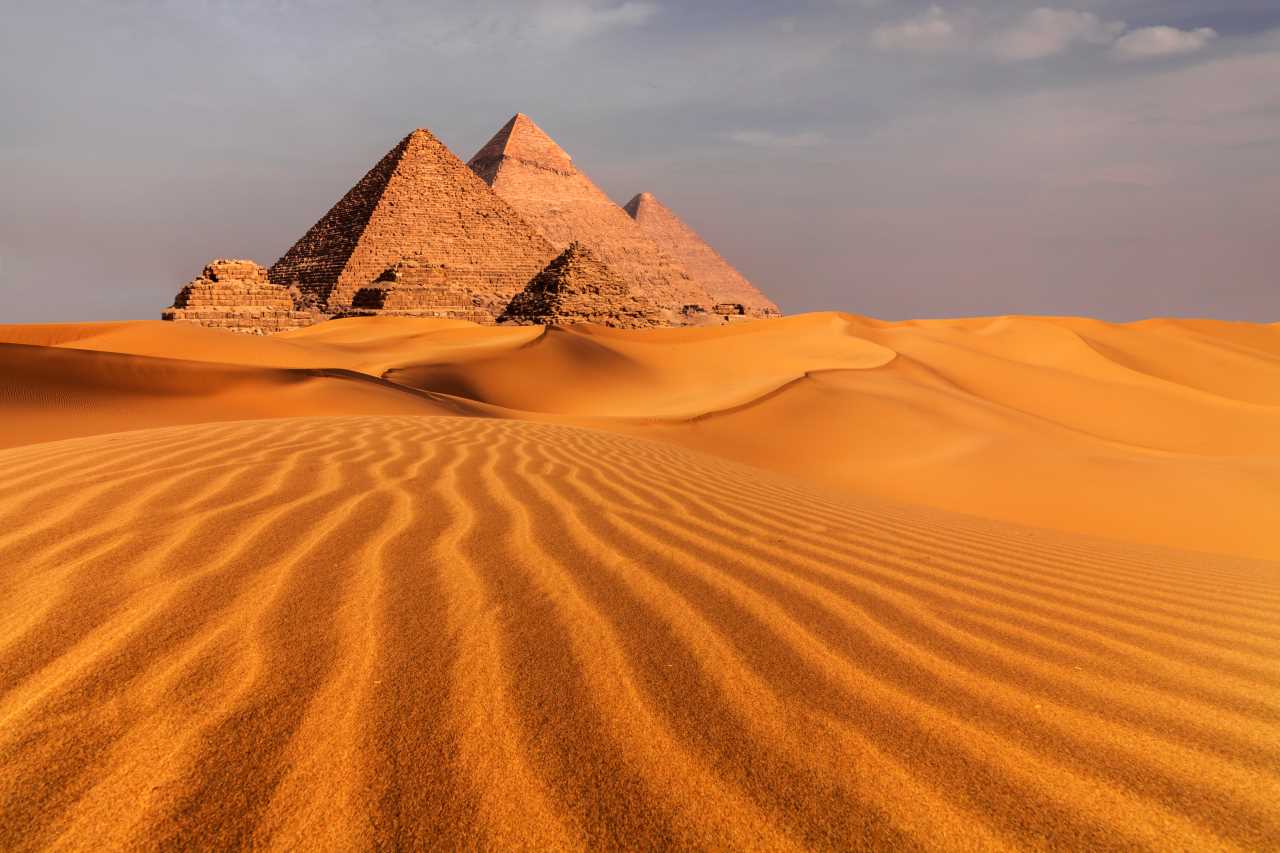
Welcome to the world of mysterious Egypt – a country that fascinates with its rich history, culture, and heritage of pharaohs, as well as its impressive pyramids. This is a destination that will take you back in time to the ancient world, where you will encounter great buildings and fascinating myths. Get ready for unforgettable adventures and discoveries that await you in this mystical country. We invite you to explore our guide to Egypt – a place that still tempts with its exoticism and takes your breath away with its beauty!
Egyptian Vacation – What to Visit?
Egypt is a country that attracts tourists from all over the world with its rich history, culture, and breathtaking landmarks. It is one of the oldest places civilized on earth, full of extraordinary places that are worth seeing during a trip to this fascinating country. Here’s a guide to the most important attractions not to be missed during a visit to Egypt!
Pyramids of Giza.
The Pyramids of Giza are some of the most iconic landmarks in the world and one of the most important places to visit in Egypt. These mighty structures, including the Great Pyramid of Cheops, Kefren and Mykerinos, are among the oldest buildings on earth and the remains of the ancient empire of pharaohs. You can see them with your own eyes by visiting the pyramid complex in Giza and also enter one of them to feel the spirit of ancient Egypt.
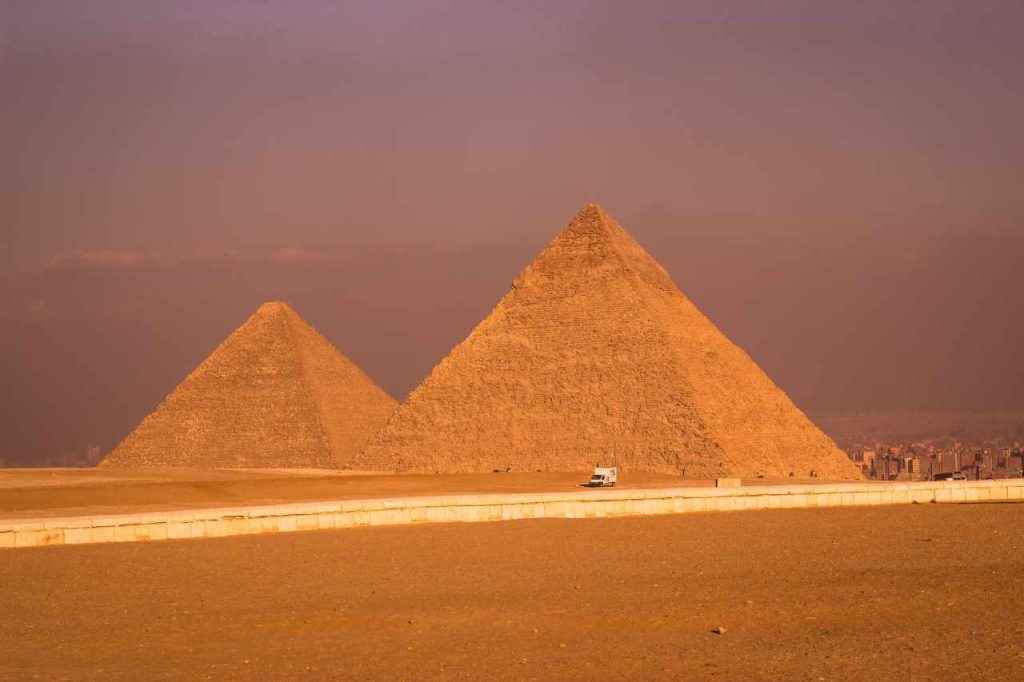
The Pyramids of Giza were built around 2500 BC. The largest of them, the Pyramid of Cheops, is about 147 meters high and consists of over 2.3 million stone blocks, each weighing an average of 2.5 tons. This building was the highest construction in the world for many centuries until the time of the Eiffel Tower. These pyramids were tombs for pharaohs – Cheops, Kefren, and Mykerinos, who ruled over Egypt during the Old Kingdom period.
Many researchers wonder how ancient Egyptians were able to build such an impressive structure without modern machines and technology. That’s why the Pyramids of Giza are so fascinating and controversial. Many theories try to explain what techniques and methods were used in the construction of these monumental structures.
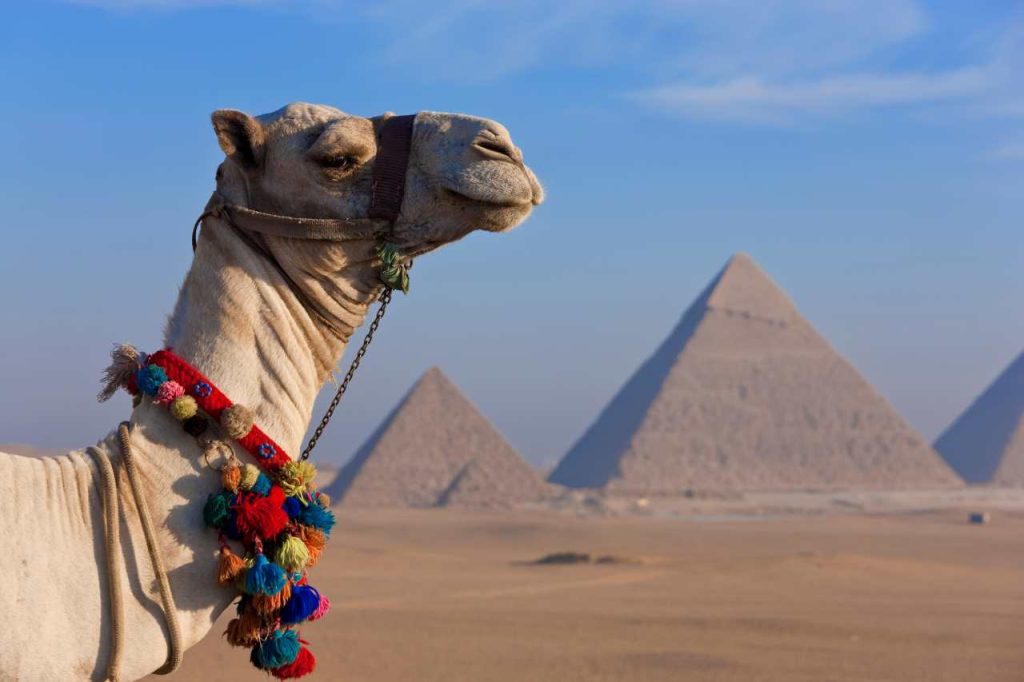
To this day, the mystery remains unsolved as to how the Egyptians were able to move huge stone blocks used to build the pyramids. There are theories that these stones were moved using ramps and special machines, but these are only hypotheses that have not been confirmed to this day.
The Pyramids of Giza are also extraordinary works of art and architecture, full of symbolism and hidden meanings. For example, the Pyramid of Cheops has many corridors and burial chambers, and the very stones used to build the pyramids were precisely cut and laid in a certain way, creating a unique pattern.
Exploring the Pyramids of Giza is one of the greatest experiences for lovers of history, art, and architecture. Tourists are offered excursions during which they can visit not only the pyramids themselves, but also other ancient Egyptian landmarks, such as the Great Sphinx or the Valley Temple.
Luxor and Aswan.
Luxor and Aswan are cities worth visiting during a trip to Egypt. Luxor is a well-known tourist center, full of historical sites and monuments. Aswan is a place where the famous Aswan High Dam and the incredible Abu Simbel Temples are located, which attract tourists with their unique architecture and history.

Luxor is a city that was once called Thebes. It is one of the most important places on the archaeological map of the world, with over 5000 years of history and full of mysteries such as pyramids, temples, tombs, and sculptures. The most important monument in Luxor is the Karnak Temple, which is considered the largest monument of ancient Egyptian architecture. Karnak consists of many buildings connected by corridors and courtyards. The most important part of the temple is the hypostyle hall, which contains over 130 columns decorated with reliefs.
Another important monument in Luxor is the Luxor Temple, built by Pharaoh Amenhotep III. The temple is connected to Karnak by a sphinx-lined avenue that is 3 kilometers long. The temple was repeatedly rebuilt by various pharaohs, including Ramses II, who added new elements to the structure.
Temples in Luxor.
Luxor is another place that cannot be missed during a visit to Egypt. It is a real treasure trove of monuments and testimonies of ancient times. Karnak, the largest temple complex in the world, with impressive columns and remnants of an ancient town, is one of the most important places in Luxor. Another incredibly impressive place is the Luxor Temple, also known as the Temple of Amun, with monumental columns and decorations on the walls.
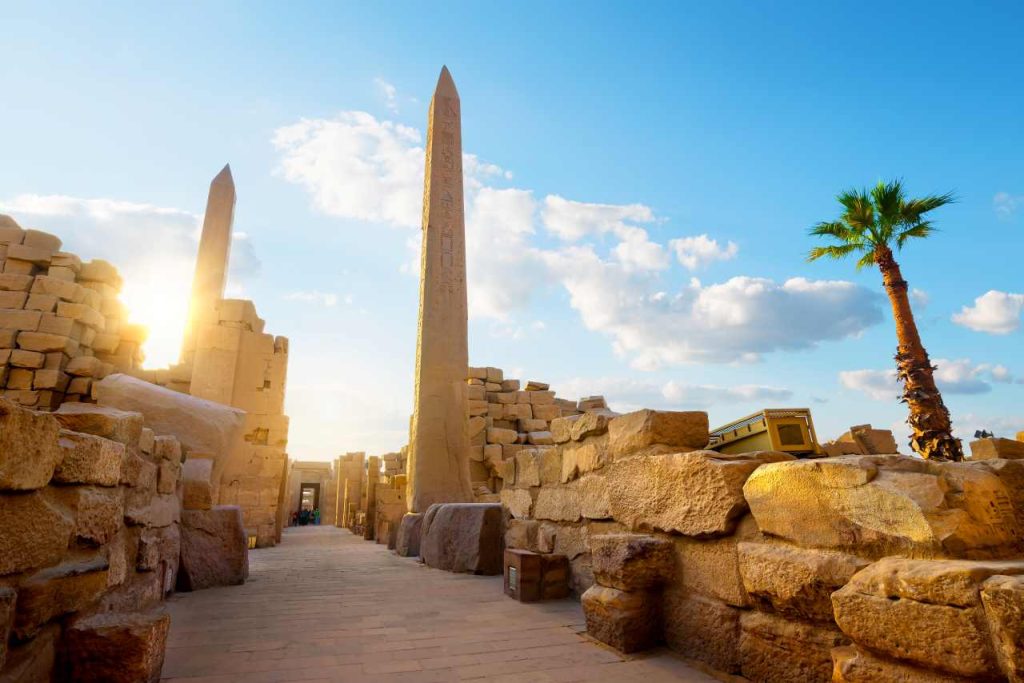
The biggest attraction in Luxor is the Karnak Temple, which was a place of worship for the god Amun and his wife Mut and son Chonsu. This temple was gradually expanded over more than 2000 years, and its architecture is an example of the greatest achievements of ancient Egyptians. The Karnak Temple complex includes many buildings, including the Great Hypostyle Hall, which is the largest columned room in the world. Inside, there are 134 columns, each of which is over 23 meters high.
Another important temple in Luxor is the Luxor Temple, which was dedicated to the god Amun and his wife Mut. This temple was built in the 13th century BC by Pharaoh Amenhotep III, but was later expanded by other rulers of Egypt, including Ramesses II. Inside the temple, there are numerous halls and courtyards, including the Courtyard of the Colonnades, which is one of the most beautiful places in the entire temple complex.
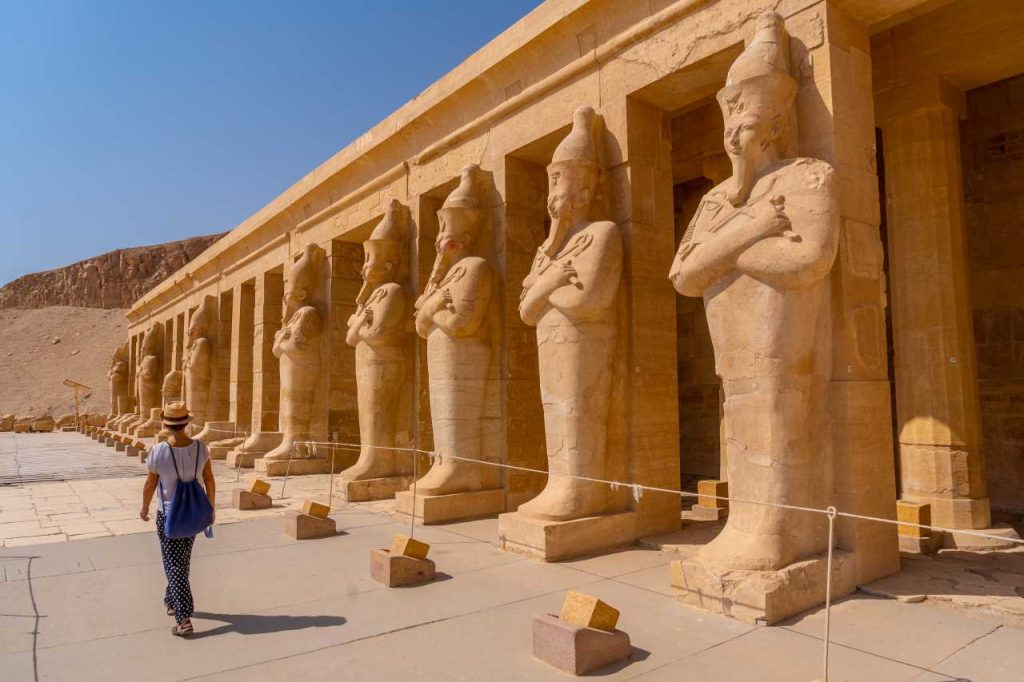
Another interesting temple in Luxor is the Temple of Seti I, which was built in the 15th century BC. This temple was dedicated to the gods Amun and Ra, and its decorations and sculptures are examples of the highest quality of ancient Egyptian art. Inside the temple, there are numerous halls and courtyards, as well as the tomb of Seti I, which is one of the most beautiful tombs in Egypt.
In Luxor, there is also the Temple of Ramesses III, which was built in the 12th century BC. This temple was dedicated to the god Amun and the gods Osiris and Ptah. Inside the temple, there are numerous halls and courtyards, as well as the Chapel of the Colonnades, which is one of the most beautiful places in the entire temple complex.
Egypt – Valley of the Kings.
The Valley of the Kings is a site in ancient Egypt where pharaohs and important members of the royal family were buried. It is a complex of tombs that amaze with their architecture and rich decorations. You can visit these extraordinary places, such as the tombs of Tutankhamun, Ramses II, Seti I, and many others, which have left behind beautiful paintings and inscriptions.
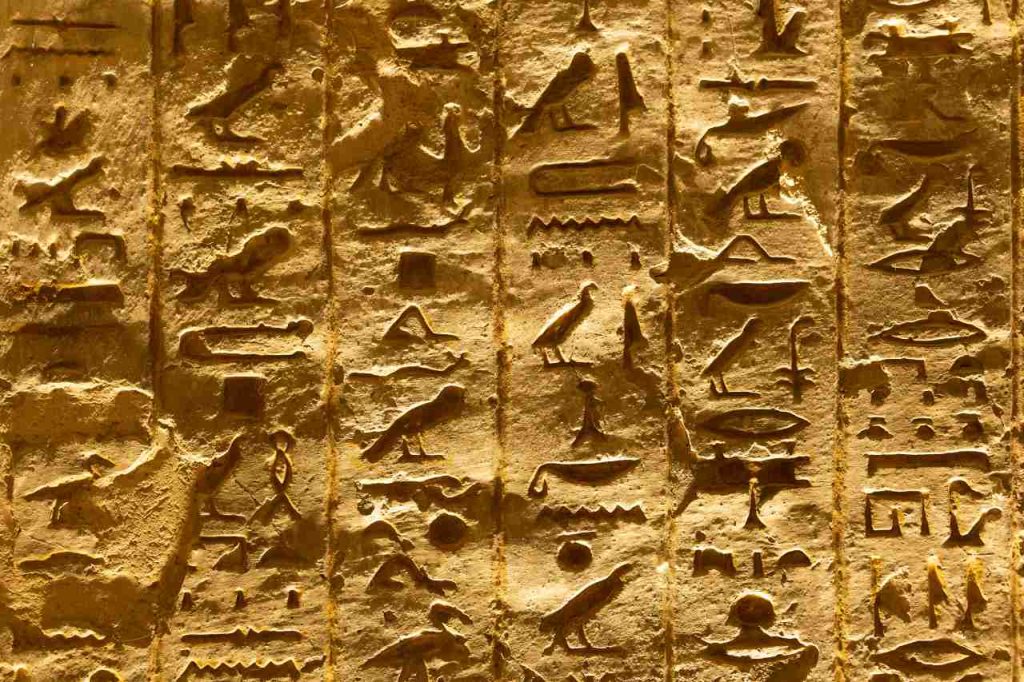
The Valley of the Kings covers an area of about 200 km² and contains over 60 pharaohs’ tombs. These tombs were built in ancient times and took many years to construct, requiring great financial resources. They were a place of burial for pharaohs, their family members, and people in their inner circle.
The Valley of the Kings contains tombs that belonged to the most important and powerful rulers of Egypt. It is worth mentioning the tombs of Ramses II and Tutankhamun, which are particularly well-known and attract the most interest from tourists. These tombs are extremely richly decorated and equipped with numerous paintings and sculptures.
The Valley of the Kings is also a place where continuous archaeological work is being carried out. For years, archaeologists have been trying to discover new tombs and learn the secrets related to their construction and the burial of the pharaohs. This has resulted in many theories and hypotheses about the Valley of the Kings and its inhabitants.
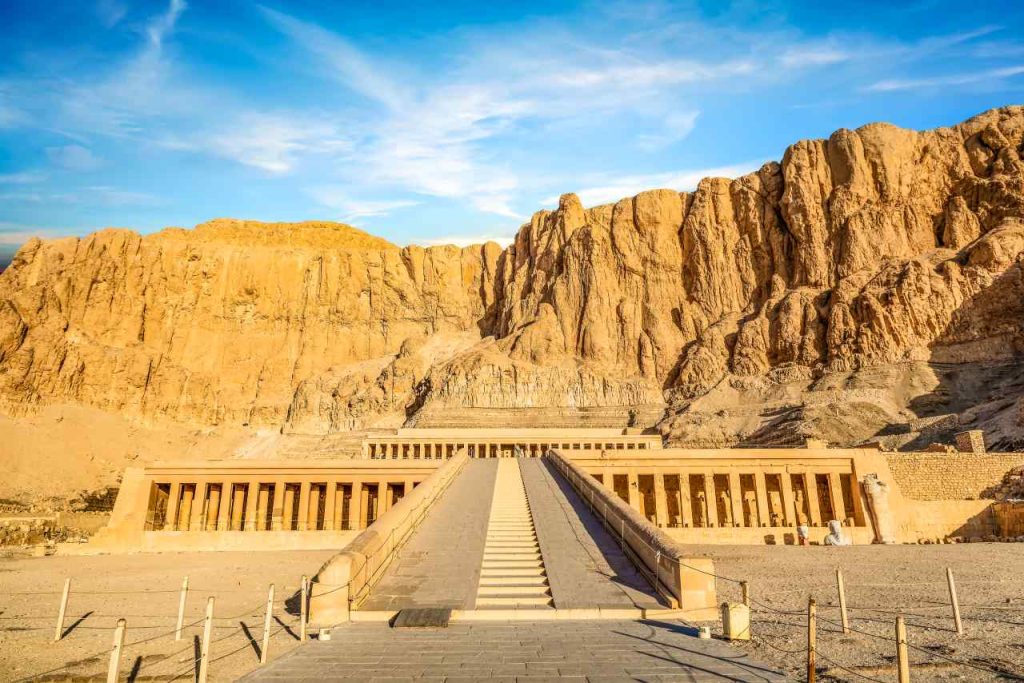
It is important to note that the Valley of the Kings is one of the most important places of religious worship in Egypt. It was here that ceremonies related to the cult of the dead pharaohs and their mythical adventures took place. It was also a place where prayers were offered to the gods to ensure good conditions for the deceased in the afterlife.
The Valley of the Kings is currently one of the most important tourist destinations in Egypt. Every year, it attracts hundreds of thousands of tourists who want to discover the secrets of the ancient tombs and see one of the most important places of religious worship in Egyptian history. As a result, the Valley of the Kings is not only an important element of Egypt’s cultural heritage but also a significant source of income for the country.
When is the best time to visit Egypt?
The best time to visit Egypt depends on the traveler’s preferences and the type of attractions they would like to see. Generally speaking, the best time to travel to Egypt is during the winter and spring months, from October to April, when the temperatures are milder and extreme heat in the summer can be avoided. During these months, temperatures are usually around 20-30 degrees Celsius, which is conducive to sightseeing and other activities.
However, it is worth noting that during Islamic and Christian holidays such as Ramadan or Christmas, some attractions may be more crowded, and some businesses and services may be limited during these holidays. Therefore, it is a good idea to check the dates of these holidays and adjust travel plans accordingly.
It is also important to remember that different regions of Egypt may have different weather conditions. For example, on the Red Sea coast, such as Hurghada or Sharm el-Sheikh, the water temperature is pleasant year-round, making it an attractive destination for diving and snorkeling. On the other hand, in the Nile Valley, such as Luxor and Aswan, temperatures may be higher in the summer months, so it is best to avoid the extreme months of summer.
What currency is used in Egypt? Is it expensive?
The official currency of Egypt is the Egyptian pound (EGP). However, in practice, in some tourist areas such as hotels, restaurants, and shops, US dollars and euros are often accepted as well. In larger cities and tourist resorts, credit cards can also be used in many places.
Prices in Egypt are generally lower compared to many other countries, especially for tourists from countries with stronger currencies. However, travel and on-site expenses may vary depending on location, type of accommodation, restaurants, or tourist attractions. For example, in more touristy areas such as Cairo, Luxor, or Hurghada, prices may be slightly higher than in less popular regions of the country.
Sample prices in Egypt include:
- Meal in a simple eatery or at a bazaar: around 20-50 EGP
- Lunch in a mid-range restaurant: around 100-300 EGP
- Entrance ticket to a monument or museum: around 60-200 EGP
- Taxi ride within a city: around 30-100 EGP depending on the distance
- Night in a mid-range hotel: around 300-1000 EGP per night
- Domestic flights between cities: varies depending on the route and date but can be relatively cheap compared to other countries.
However, it is worth remembering that prices may vary depending on the tourist season, negotiations, and individual preferences. In general, Egypt is considered a relatively cheap travel destination, making it an attractive place for budget travelers.
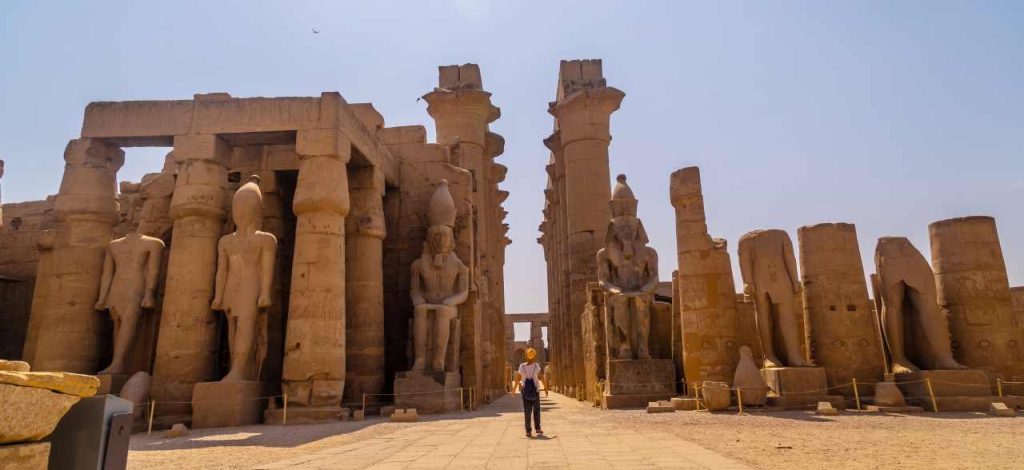
Is Egypt safe?
Safety in Egypt can be a variable issue, depending on many factors, such as the current political and social situation, as well as regional conditions. Generally speaking, many tourist destinations in Egypt, such as Cairo, Luxor, Aswan, and coastal resorts, are considered relatively safe for tourists, provided that they follow the rules of caution and recommendations from local authorities and applicable regulations.
However, as with traveling to any country, it is always worth being vigilant and aware of the surroundings. It is important to monitor the current political, social, and security situation in the places we plan to visit, use information from reliable sources, such as national governments or embassies, and follow any warnings and recommendations issued by local authorities.
In addition, it is important to respect local cultural norms, customs, and traditions to avoid misunderstandings or potential conflicts. In some places, especially those of a religious or cultural nature, there may be certain rules regarding dress, behavior, or photography that are worth respecting.
It is also worth being aware of specific risks associated with travel, such as health problems related to climate or food, heat, or traffic-related issues. It is recommended to have appropriate travel insurance and to observe standard precautions, such as being cautious about valuables, using certain means of transportation, avoiding unfamiliar areas at night, or traveling in a group, especially in more remote or less crowded places.
In summary, although many places in Egypt are considered relatively safe for tourists, it is always worth being a responsible traveler, being aware of the surroundings, respecting local customs and rules, monitoring the situation, following the recommendations of local authorities, and using information from reliable sources.
Also check out Greece!
